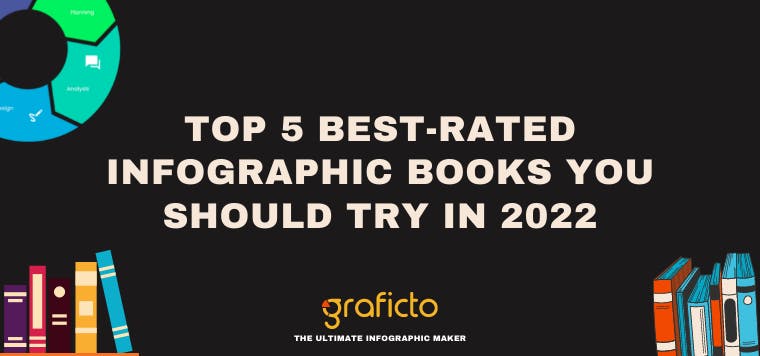Infographics condense complex information into a story. They can be entertaining, informative, or educational, composed of visuals, texts, as well as datasets. Infographics are a great asset, sharpen content skills ,and improve analytical thinking. However, all infographics don’t deliver the same value or convey the intended message. The following strategies will make effective visual infographics that inspire audience captivation.
This infographic was created using Graficto.
Understanding the Basics of Infographics
Before you start designing, an infographic like every other visual should get sorted in categories that provide simple yet eye-catching appeal. Your central focus, type of audience, and expectations should already be analyzed. Your audience and the infographic should align.
Key Elements of a Great Infographic
- Clear and Concise Headline: Your headline should summarize the infographic's content and grab the reader's attention.
- Logical Flow: Put the most important information first, transcribed in simplified phrases instead of in paragraphs. Your audience will be engaged proving retention of interest.
- Relevant Data: Use accurate and up-to-date data to support your narrative.
- Compelling Visuals: Use graphics, icons, and color schemes that align with your topic and brand.
- Readable Text: Ensure that any text included is easy to read and complements the visuals.
Brainstorming and Planning
Put some thought into your infographic concepts first before jumping into design as this will aid in planning your content. This ensures message clarity for your audience while offering you the chance to think of the best way to relay your information.
Choosing the Right Topic
Your audience is your primary consideration when selecting a topic. Think about industry trends, frequently asked questions, or what your audience would find original and eye-opening. Timeliness and relevance are great contributors to good infographic examples.
Outlining Your Infographic
Craft your outline around the specific infographics that you intend to focus the most on. Define parts within your sections and subtopics while deciding what information you will need to support each argument. This is very important for your infographic to maintain a logical sequence.
Designing Your Infographic
It’s a brilliant fusion of clarity and sheer creativity. This is how you make an amazing infographic which passes across vital information.
Selecting a Style and Layout
Timelines, comparison charts, and process diagrams are just a few styles. Pick one that augments your content and tells the story best.
Using Visual Hierarchy
Utilizing visual hierarchy effectively assists in guiding the audience’s eye throughout the infographic. Utilize size, color, and spatial positioning to draw attention to critical elements while forming a seamless transition from one section to another.
Choosing Colors and Fonts
Fonts and colors, when chosen appropriately, can have a significant impact on infographic’s overall design. When preparing an infographic, ensure to select colors that depict your brand or relate to the theme. Pick colors that are easy to read and go well with your other design elements.
Incorporating Data Visualization
Data visualization is one of the most important aspects of an infographic. As such, data should always be represented graphically by the use of photographs, icons, graphs, and charts. This will assist your audience in grasping intricate information quickly and keep them interested.
Tips for Enhancing Your Infographic
Although you might have a design masterclass infographic, there are other tips that will help you fine-tune your creation.
Keep It Simple
Your infographic should look neat, organized, and coherent. Remove any extraneous visual elements which may detract from the core information you are presenting. Remember, there is beauty in simplicity.
Use High-Quality Images
Be selective when choosing images or graphics relevant to your content. The professionalism of your infographic and information retention increases when high-quality graphics are used.
Optimize for Sharing
When you design an infographic, think how it may be shared. Make sure there is a mobile optimized version that is viewable on social media platforms. Always embed your logo and use a call-to-action that encourages users to either learn more, view, or share the infographic.
Test and Refine
Infographics can be test-marketed just like any other marketing materials. Gather a small audience and collect feedback before you publish. Act on the suggestions to make necessary design changes and bolt-shoot clarity to your message and graphics.
Showcasing Great Infographic Examples
If you need ideas infographics offer an endless reserve. There are innumerable websites with showcases containing all types of creative infographics for study. It is such a brilliant way of learning because it exposes one to those elements which are responsible for the success of an infographic, and it boosts one’s creativity towards designing his/her infographics.
Best Practices from Infographic Examples
- Nike's Sustainability Infographic: By using bold colors and clear data points, Nike effectively communicates their sustainability efforts.
- National Geographic's Wildlife Migration Map: This infographic uses detailed maps and stunning visuals to educate viewers about wildlife migration patterns.
- HubSpot's Marketing Funnel Infographic: With a clean design and concise text, HubSpot effectively outlines the stages of a marketing funnel.
Conclusion
Like any other artwork, designing an infographic requires a mix of creativity and clarity. You can create infographics which not only look nice, but also convey your intended message by understanding the fundamentals, planning adequately, and adhering to best design practices. Whether you plan to create an infographic on design or to showcase data driven insights, these tips help ensure that your infographics captivate your audience.
As a final note, the most effective infographics are those which incorporate a narrative, provoke some kind of emotional response, and motivate the audience to take action. Start brainstorming fantastic ideas and truly express yourself through infographics.



